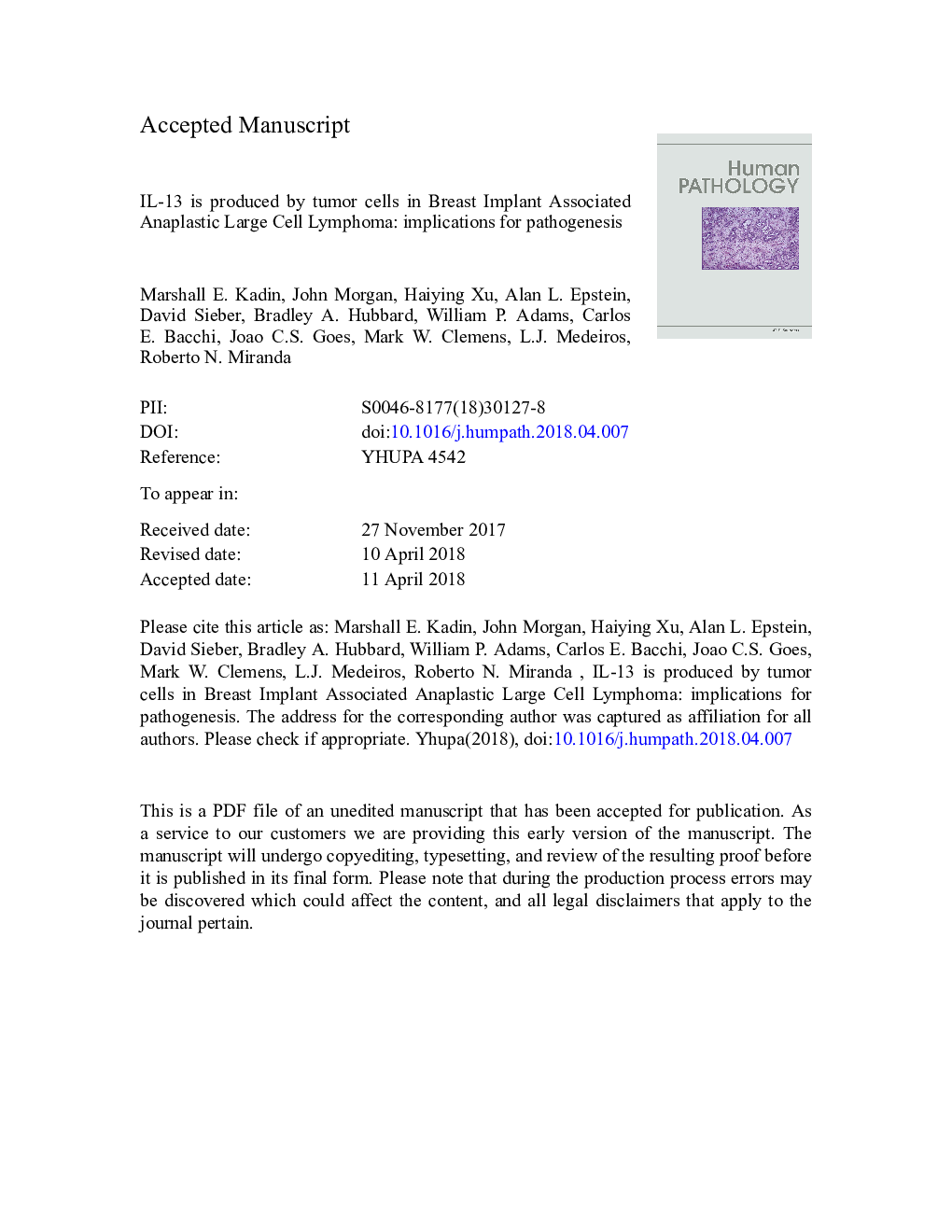| Article ID | Journal | Published Year | Pages | File Type |
|---|---|---|---|---|
| 8807469 | Human Pathology | 2018 | 28 Pages |
Abstract
More than 500 women worldwide have developed a CD30+ T-cell lymphoma around breast implants, strongly suggesting a cause-and-effect relationship, and designated as breast implant-associated anaplastic large cell lymphoma (BIA-ALCL). The mechanism of lymphomagenesis is unknown. Recently, a bacterial biofilm containing gram-negative bacilli was discovered on the surface of breast implants associated with ALCL. We and others have described overexpression of the proto-oncogene JUNB and mutations of JAK1/2, TP53 and STAT3 in BIA-ALCL. Here we report that BIA-ALCL cell lines and anaplastic lymphoma cells in clinical specimens produce IL-13, the signature cytokine of allergic inflammation. Supporting the link of BIA-ALCL to allergic inflammation, lymphoma cells were often surrounded by eosinophils and mast cells, features typically absent in systemic ALCL. Because of the link of IL-13 to allergy, we looked for IgE and found it decorating the surface of mast cells and antigen-presenting follicular dendritic cells in capsules and lymph nodes infiltrated by anaplastic lymphoma cells, but not uninvolved capsules. Plasma cells within capsules and regional lymph nodes were identified as a possible source of IgE. Together, these findings suggest the hypothesis that an amplified immune response with features of a chronic allergic reaction in a susceptible patient underlies the pathogenesis of BIA-ALCL.
Keywords
Related Topics
Health Sciences
Medicine and Dentistry
Pathology and Medical Technology
Authors
Marshall E. MD, John PhD, Haiying BS, Alan L. MD, PhD, David MD, Bradley A. MD, William P. MD, Carlos E. MD, Joao C.S. MD, Mark W. MD, L. Jeffrey MD, Roberto N. MD,
